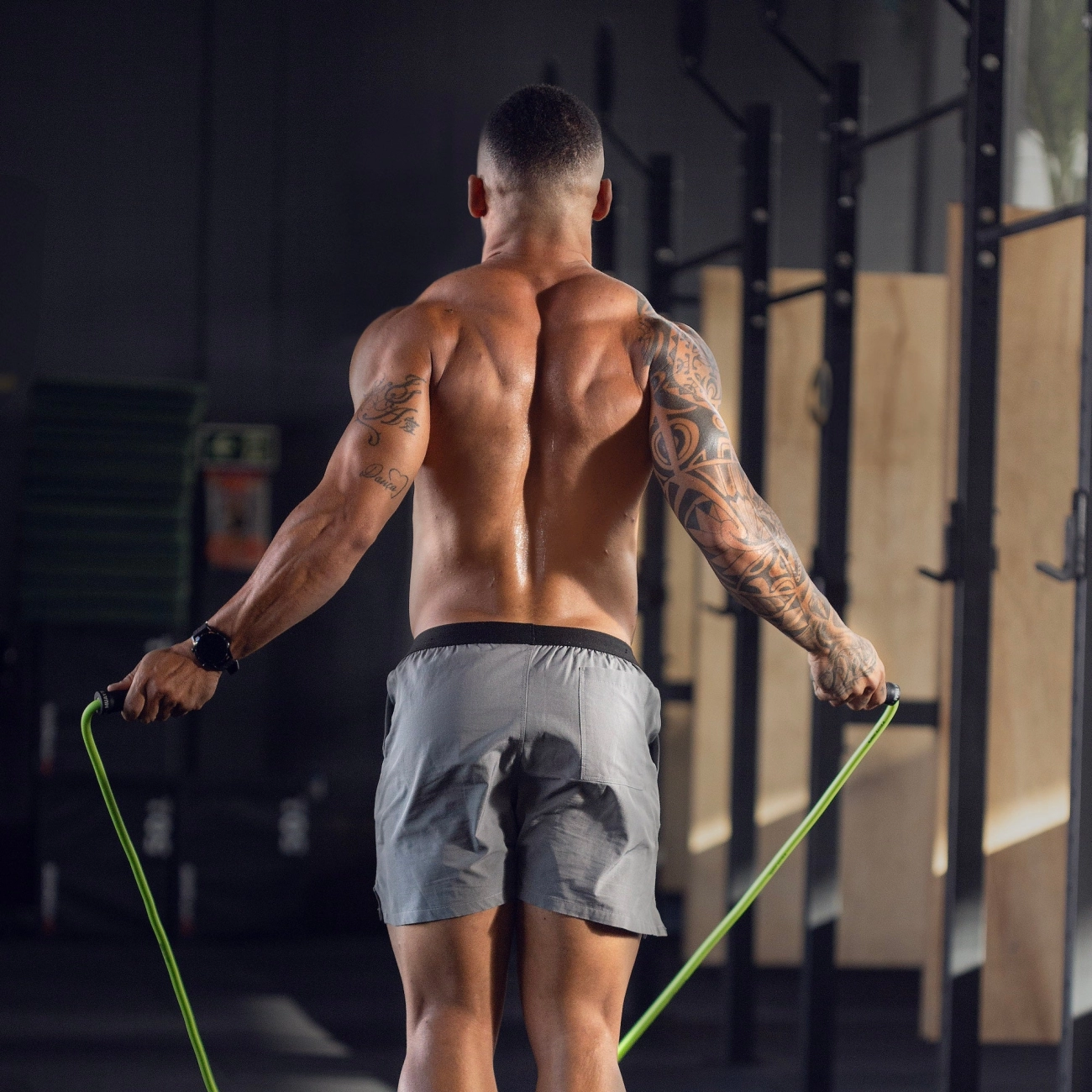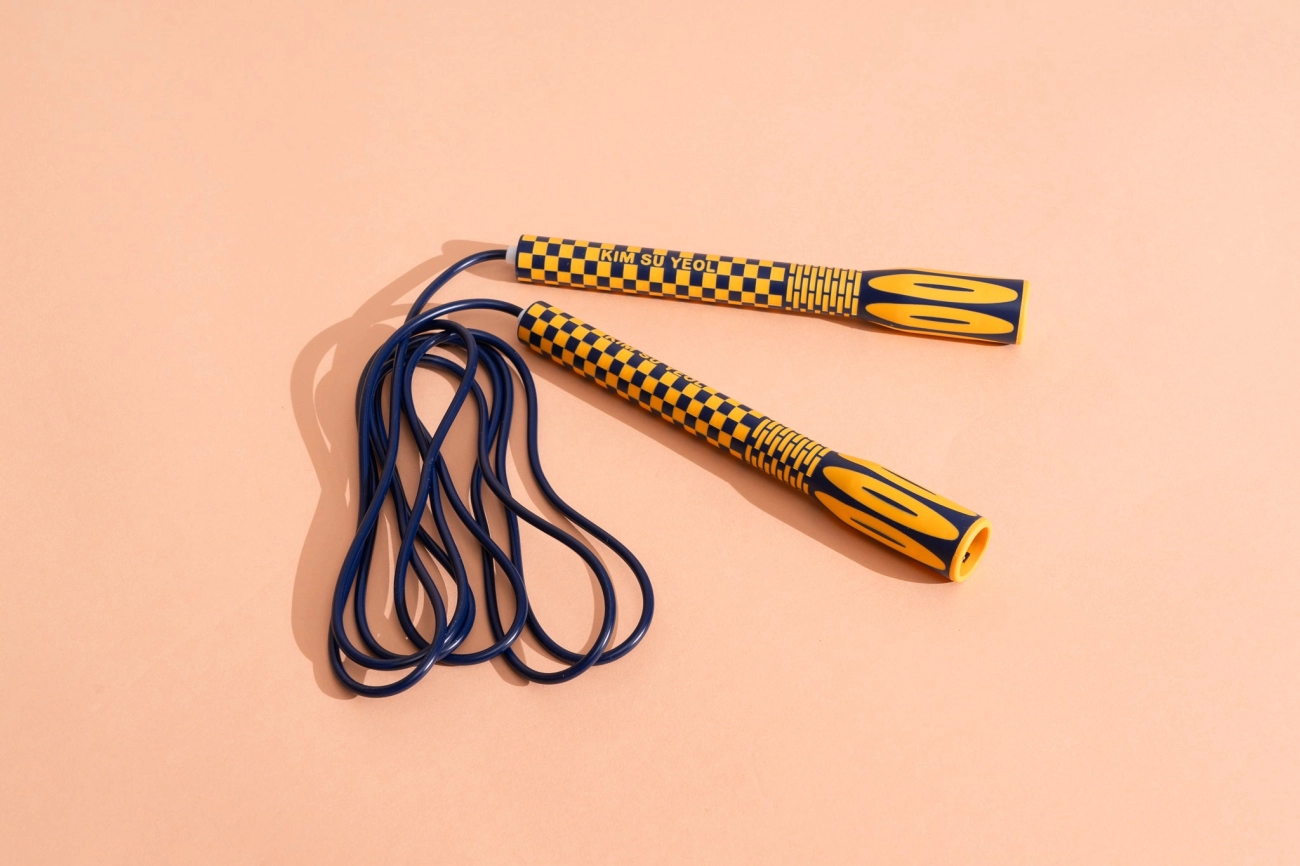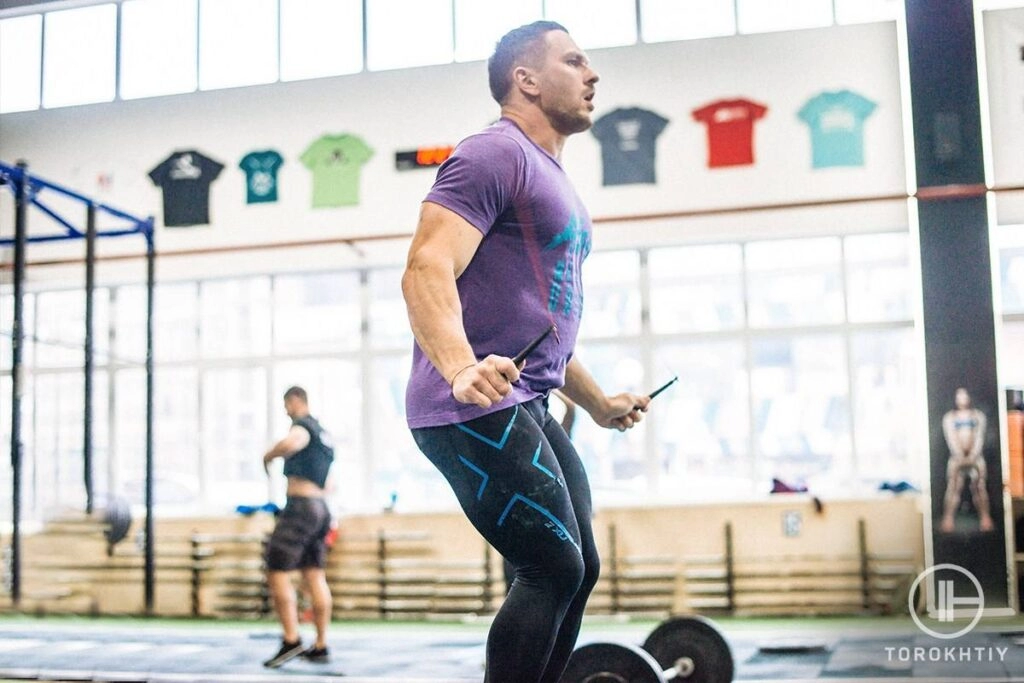Why Jump Rope is Perfect for Beginners
Jump rope is an excellent workout choice for beginners due to its simplicity, affordability, and effectiveness. Unlike complex exercises, jump roping is easy to learn even if you’re starting from scratch. All you need is a quality jump rope—preferably a lightweight and durable PVC jump rope—and a small space to begin. This portability means you can take your workout anywhere, whether at home, outdoors, or while traveling.
Beyond convenience, jump rope workouts offer a fast and efficient calorie burn, making them ideal for those looking to improve cardiovascular health quickly. Just a few minutes of consistent jumping can raise your heart rate, boost stamina, and promote fat loss, which is why jump rope is often recommended in cardio jump rope workout plans for beginners.
Jumping rope also enhances key physical skills like timing, balance, and coordination. These benefits are especially useful if you are new to fitness, as they build a strong foundation for other activities and workouts. Developing better coordination through jump rope exercises can lead to improved athletic performance and reduce the risk of injury during more complex movements.
For anyone starting out, PVC jump ropes stand out because they are lightweight, durable, and cost-effective. Their flexibility and smooth rotation make learning basic jump rope techniques easier, allowing beginners to focus on form and rhythm rather than dealing with cumbersome equipment. Investing in a quality PVC jump rope is a smart choice to keep your jump rope workouts enjoyable and effective from day one.
By choosing jump rope, beginners get a full-body workout that’s simple, affordable, and powerful enough to deliver quick health benefits while improving balance and coordination—everything you need to kickstart your fitness journey confidently.
Essential Tips Before You Start Your Jump Rope Workout for Beginners

Getting started with beginner jump rope exercises is exciting, but there are a few key things to keep in mind to ensure you have a safe and effective workout. Paying attention to proper rope sizing, warm-up routines, footwear, and how you hold your rope will set you up for success.
Choose the Proper Jump Rope Length and Size
Using the right jump rope length is critical for comfort and technique. Here’s a quick guide:
- Stand on the center of your rope with one foot.
- Pull the handles straight up along your sides.
- For beginners, the handles should reach around your armpits.
- If the rope is too long, it will drag and slow you down.
- If it’s too short, you’ll trip, causing frustration.
Most PVC jump ropes come with adjustable lengths, so you can easily customize them for the perfect fit.
Warm Up and Stretch to Avoid Injuries
Before jumping into your jump rope workout plan for beginners, take 5 to 10 minutes to warm up your muscles. This can include:
- Light jogging or marching in place
- Dynamic stretches like leg swings, ankle rotations, and arm circles
Warming up prepares your body for cardio activity and reduces the risk of strains or sprains.
Wear the Right Footwear and Choose the Best Surface
Jumping rope puts stress on your feet and joints, so wearing supportive athletic shoes with good cushioning is essential. Avoid barefoot jumping or shoes with flat soles.
Ideal surfaces include:
- Wood or rubber gym floors
- Outdoor pavement (not uneven or gravel)
- Avoid concrete which is too hard and may cause joint pain
Combining the right footwear with a proper surface helps protect your ankles and knees.
How to Hold and Use Your PVC Jump Rope Correctly
Mastering the basic jump rope technique starts with your grip and wrist movement:
- Hold the handles gently but firmly, about at hip height.
- Keep your elbows close to your body.
- Use your wrists to swing the rope rather than your whole arms.
- Keep your jumps low—just enough to clear the rope—to reduce fatigue.
PVC jump ropes are lightweight and durable, making them ideal for beginners focusing on form and rhythm without heavy equipment slowing them down.
Following these essential tips will help you build a solid foundation on how to jump rope for fitness and make your workouts more enjoyable and effective right from the start.
Top 5 Best Jump Rope Workouts for Beginners
If you’re just starting, knowing the best jump rope workouts for beginners can make all the difference in staying motivated and progressing safely. Here are five easy, effective routines that build your skills, cardio, and coordination.
1. Basic Jump Single Jumps
This is the foundation of all beginner jump rope exercises. Focus on smooth, even jumps:
- Keep feet together and jump just high enough for the rope to pass under.
- Use your wrists to turn the rope, not your arms.
- Maintain an upright posture and land softly on the balls of your feet.
This simple move develops your timing and rhythm while burning calories quickly.
2. Alternate Foot Step Jump
Great for improving agility and balance, this move mimics jogging in place but with the rope:
- Jump on one foot while the other foot stays slightly off the ground.
- Switch your feet with each jump, creating a quick stepping rhythm.
- Keep jumps low and controlled for better endurance.
This workout adds variety and helps prepare you for more dynamic jump rope routines.
3. High Knees Jump
To boost your cardio endurance, turn up the intensity with high knees:
- Jump rope while lifting your knees toward your chest with each jump.
- Pump your arms to increase heart rate further.
- Keep a fast but steady pace for 20-30 seconds, rest, then repeat.
High knees burn more calories and strengthen your core and legs simultaneously.
4. Side to Side Jump
This exercise enhances coordination and lateral movement:
- Instead of jumping straight up, hop side to side over an imaginary line.
- Keep your jumps light and your feet close together.
- Focus on smooth side steps and consistent rhythm.
This move prepares you for sports and activities that require good footwork.
5. Jump Rope Intervals for Fat Burn
Intervals mix work and rest periods, maximizing fat burn and endurance:
- Jump at a moderate to fast pace for 30 seconds.
- Rest or march in place for 15-30 seconds.
- Repeat for 5-10 rounds based on your fitness level.
This approach fits perfectly into a beginner’s workout plan and helps avoid burnout while improving cardiovascular health.
For a deeper dive into how to jump rope for fitness and tips on perfecting your technique, check out how to jump rope like a boxer. Also, the right rope makes a big difference. Explore beginner-friendly options like the freestyle PVC jump rope to get started with confidence.
Sample Weekly Jump Rope Workout Plan for Beginners

Starting a jump rope workout plan for beginners is all about consistency and gradual progress. Jumping rope 3 to 5 days a week lets your body adapt without overwhelming it. Here’s a simple, effective schedule that builds your skills, endurance, and fat-burning ability over time.
Beginner Jump Rope Schedule
-
Day 1: Easy Start
- 5 minutes of basic jump rope technique
- 30 seconds jumping, 30 seconds rest, repeat 5 times
- Focus on form and steady pace
-
Day 2: Rest or Light Activity
- Walk, stretch, or do gentle mobility exercises
- Let your muscles recover and prevent overtraining
-
Day 3: Cardio Jump Rope Workout
- 10 rounds of 20 seconds jumping with 40 seconds rest (Jump rope intervals for fat loss)
- Mix basic jumps and alternate foot step jumps to improve agility
-
Day 4: Rest
-
Day 5: Coordination and Endurance
- 3 sets of 1-minute side to side jumps
- 1-minute high knees jump to boost cardio endurance
- Rest 30 seconds between sets
-
Day 6: Optional Light Jumping or Cross-training
- Low-intensity movement like walking, yoga, or cycling
- Helps maintain activity without strain
-
Day 7: Full Rest
Gradually Increase Workout Intensity
As your skills improve:
- Add more rounds or time to each workout
- Decrease rest periods gradually
- Try slightly faster jump pace or more complex jumps like double unders
Increasing intensity is important but should be done slowly to avoid injury and burnout.
Importance of Rest and Recovery
Rest days are just as vital as jump rope days because:
- They help your muscles repair and grow stronger
- Reduce the risk of joint stress and overuse injuries
- Keep your motivation high by preventing burnout
Aim to listen to your body and take extra rest if you feel sore or fatigued.
Following a clear weekly jump rope workout plan helps beginners build fitness safely while getting the best out of their PVC jump rope. Stick to this progression, and soon you’ll notice improved coordination, cardiovascular health, and calorie burning without unnecessary strain.
Common Mistakes Beginners Should Avoid in Jump Rope Workouts
Starting your beginner jump rope exercises on the right foot means knowing what pitfalls to skip. Avoiding these common mistakes will help you maximize your workouts and stay injury-free.
Jumping Too High or Too Fast
A lot of beginners think they need to jump super high or speed through every rotation. Jumping too high wastes energy and increases impact on your joints, which isn’t necessary. Aim for just enough height for the rope to pass under your feet—usually about 1 to 2 inches off the ground.
Similarly, rushing through your jumps can throw off your rhythm and timing. Focus on smooth, controlled jumps instead of speed; this improves coordination and helps build endurance without wearing you out too fast.
Poor Posture and Form
Your posture plays a big role in how effective and safe your jump rope workouts are. Poor form can lead to injuries or muscle strain. Keep these basics in mind:
- Stand up straight with a slight bend in your knees.
- Keep your core engaged and shoulders relaxed.
- Use your wrists to turn the rope, not your entire arms.
Maintaining good posture will also enhance your balance and make jumping easier over time.
Using Improper Rope Length or Equipment
Using the right jump rope length is crucial, especially when starting out. A rope that’s too long or too short can cause tripping and awkward movements. Here’s a quick sizing tip:
- Stand on the middle of your rope with one foot.
- The handles should reach about chest height.
Also, make sure you’re using equipment suited for beginners—PVC jump ropes are lightweight, durable, and easy to control. Avoid heavy ropes or those made from metal chains early on as they can be tough to manage.
Overtraining Without Rest
Jump rope workouts are intense and can easily lead to overtraining if you’re not careful. Skipping rest days or pushing too hard leads to fatigue, lowers performance, and raises injury risk.
Set a workout plan that includes rest and recovery days. This helps your muscles heal and lets you progress steadily without burnout or setbacks.
By steering clear of these mistakes, you’ll get more out of your easy jump rope routines and build a strong, lasting jump rope fitness habit.
How to Choose the Right Jump Rope for Beginners
Selecting the best jump rope for beginners plays a big role in staying motivated and getting results fast. Not all ropes are created equal, so here’s what to focus on when picking your first jump rope, especially if you want easy jump rope routines that stick.
Why PVC Jump Ropes Stand Out for Beginners
PVC jump ropes are a top choice for beginners because they balance durability, weight, and grip perfectly. Here’s why they work well:
- Durability: PVC material holds up well through regular use, whether you’re jumping indoors or outdoors.
- Weight: They’re lightweight but still have enough heft to provide good rotation control, so you can maintain your rhythm.
- Grip: PVC handles often come with textured grips that prevent slipping even when your hands get sweaty. This helps maintain good form and avoid accidents.
PVCJumpRope.com specializes in these and offers ropes built to last, ideal for those just starting out.
Key Features to Look for in a Beginner Jump Rope
When shopping for a jump rope, focus on these critical features:
- Length Adjustment: Make sure the rope can be easily trimmed or adjusted. The right length means less tripping and better technique. A rule of thumb – stand on the middle of the rope; handles should reach about chest height.
- Handle Comfort: Handles should fit comfortably in your hand without slipping. Foam or rubber grips add comfort during longer sessions.
- Smooth Rotation: Look for bearings or swivel mechanisms in the rope to ensure smooth, tangle-free turning. This reduces frustration and helps keep your flow.
- Lightweight Construction: A lighter rope is easier to control when learning basic jump rope techniques but make sure it’s not too light to lose rhythm.
PVCJumpRope.com Product Highlights for Beginners
At PVCJumpRope.com, you’ll find beginner-friendly jump ropes with:
- Adjustable lengths for a custom fit.
- Ergonomic handles featuring non-slip grips.
- Durable PVC cords designed for lasting use on various surfaces.
- Competitive pricing tailored for first-time buyers who want quality without breaking the bank.
Choosing the right jump rope upfront can make your beginner jump rope exercises more enjoyable and effective. Focus on comfort, durability, and proper sizing, and you’ll be off to a great start in your jump rope workout plan for beginners.
FAQs About Jump Rope Workouts for Beginners
Here are some common questions beginners ask about jump rope exercises, with clear answers to help you get started and stay on track.
How Long Should I Jump Rope Daily as a Beginner
Start with short sessions of 5 to 10 minutes a day. Jump rope is a high-intensity cardio workout, so even short bursts are effective. Gradually increase your jump time by a minute or two each week as your endurance improves. Aim for 15 to 20 minutes daily, or about 3 to 5 days a week to build consistency without overdoing it.
Will Jump Rope Help Me Lose Belly Fat
Jump rope burns a lot of calories quickly, making it a powerful tool for fat loss, including belly fat. However, spot reduction is a myth—losing belly fat requires overall body fat reduction by combining jump rope cardio with a healthy diet. Pair your jump rope workouts with good nutrition to see the best results.
Can I Do Jump Rope Workouts at Home or Do I Need a Gym
You can definitely jump rope at home. One of the best things about jump ropes, especially lightweight PVC ropes, is their portability and low space needs. Just make sure to choose an open area with a flat, non-slip surface like hardwood floors or outdoor concrete. Avoid carpets or soft surfaces that can affect your jumping.
How to Increase Jump Rope Workout Intensity Safely
To boost your jump rope workout without risking injury:
- Increase your speed gradually—start slow and step up as you feel comfortable.
- Add variations like alternate foot steps, high knees, or side jumps to keep your body challenged.
- Use jump rope intervals: alternate between fast jumping for 30 seconds and slow or rest periods for 30 seconds to maximize fat burning.
- Focus on good form to prevent injuries as intensity rises.
- Listen to your body—rest when needed and avoid overtraining.
Using the right PVC jump rope for beginners with adjustable length and comfortable handles can also help you maintain proper form and workout intensity safely.
Jump rope workouts are simple, effective, and flexible enough for any beginner looking to boost cardio fitness and burn calories quickly right at home.



